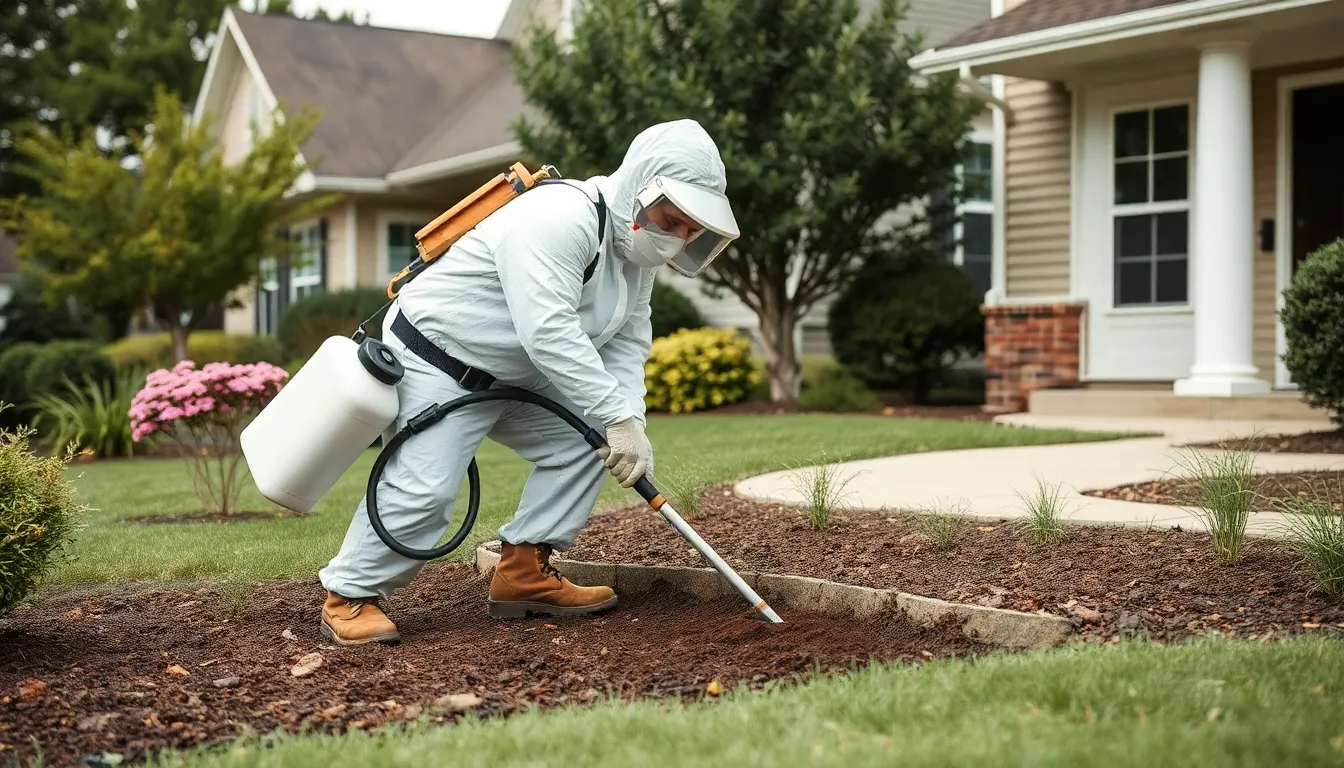Termites might be tiny, but they sure know how to throw a big party in your home—one that can cost you a fortune if left unchecked. These wood-munching pests can turn your cozy abode into a buffet, feasting on your walls, furniture, and even that beloved antique you inherited from Grandma. So how much should one expect to shell out for termite treatment?
The answer isn’t as straightforward as a trip to the grocery store. Factors like the size of the infestation, the type of treatment, and your home’s location all come into play. But don’t worry, understanding the costs can save you from a financial hangover. Let’s dig into the details and arm you with the knowledge you need to tackle these unwanted guests before they chew through your wallet.
Table of Contents
ToggleOverview of Termite Treatment Costs
Termite treatment costs vary widely based on specific factors. Understanding these costs helps homeowners prepare for expenses related to necessary treatments.
Factors Influencing Treatment Prices
Treatment prices depend on several key factors. First, the size of the infestation affects treatment approaches and costs. More extensive infestations often require higher investments. Second, the type of treatment selected influences overall expenses. Chemical treatments, bait systems, and heat treatments each have distinct price points. Third, geographical location impacts costs. Urban areas typically face higher treatment prices due to increased demand for pest control services. Finally, the overall condition of the home matters. If structural damage exists, additional repairs add to the total expense.
Average Cost Ranges for Different Treatments
Average costs vary significantly for termite treatments. Chemical treatments generally range from $200 to $1,500, depending on the treatment type and home size. Bait systems often cost between $1,000 and $2,500 for initial installation and ongoing monitoring. Heat treatments typically range from $1,500 to $3,000, considering the comprehensive approach they provide. Homeowners should get multiple quotes from pest control companies to ensure competitive pricing.
Types of Termite Treatments

Different treatments exist to effectively manage termite infestations. Homeowners should consider options like chemical treatments, baiting systems, and fumigation processes, each varying in cost and effectiveness.
Chemical Treatments
Chemical treatments involve applying liquid pesticides to the soil or wood. Costs range from $200 to $1,500 based on the size of the treated area and infestation severity. Professionals may inject these substances directly into wood or create a barrier around the foundation. Various formulations exist, including liquid termiticides and foam options for hard-to-reach areas.
Baiting Systems
Baiting systems use strategically placed bait stations to target termites over time. Costs typically range from $1,000 to $2,500 depending on the number of stations installed and extent of the infestation. These systems require ongoing monitoring and may take months to see results. Additionally, they’re designed to attract termites to the bait, ultimately eliminating the colony.
Fumigation Processes
Fumigation involves sealing the home and introducing gas to eliminate termites. This method costs between $1,500 and $3,000 and is often necessary for severe infestations. Prior to treatment, homeowners must remove pets and valuables for safety. Professionals ensure the gas penetrates all areas, including walls and crawlspaces, for comprehensive pest removal.
Additional Costs to Consider
Termite treatment costs can increase with additional expenses. Homeowners should factor in several elements beyond the basic treatment price.
Inspection Fees
Inspection fees often precede treatment. These assess the extent of the infestation and the home’s condition. Typically, pest control companies charge between $100 to $300 for inspections. Some companies waive the fee if treatment is pursued. A thorough inspection identifies problem areas, guiding homeowners on necessary actions. Understanding these costs helps in planning the overall budget for termite management.
Follow-Up Treatments
Follow-up treatments are key for long-term effectiveness. Multiple treatments may be required, particularly after initial extermination efforts. Yearly maintenance plans often range from $200 to $1,000, ensuring protection against future infestations. Companies may recommend follow-ups based on the treatment type and the extent of the infestation. Homeowners benefit from scheduling regular inspections to catch any potential issues early. These proactive strategies can help avoid more significant costs down the line.
Finding the Right Professional
Choosing a qualified pest control expert is critical for effective termite treatment. Professionals understand different species and treatment methods, ensuring tailored solutions that address specific infestations.
Importance of Hiring an Expert
Hiring a licensed exterminator offers peace of mind. Expertise ensures thorough inspections, identifying not only visible termites but also hidden colonies. Experience matters when selecting treatment methods, as some pests respond better to certain techniques. Homeowners enjoy the benefits of tailored maintenance plans that prevent future infestations. Trusting a professional leads to effective treatment, minimizing potential damage to structures.
How to Compare Quotes
Comparing quotes involves gathering multiple estimates from reputable pest control companies. Homeowners should inquire about the specifics of each treatment plan, including the methods, timelines, and guarantees provided. Look at the total cost, considering additional fees like inspections and follow-ups. Evaluate the reputation of each company by checking reviews and testimonials from past clients. Prioritizing transparency in pricing will help uncover any hidden costs that could arise later. Gathering detailed information enables informed decisions, ensuring effective termite management.
Understanding the costs associated with termite treatment is crucial for homeowners. By being informed about the various options and their price ranges, they can make better decisions to protect their homes. It’s important to consider factors like the size of the infestation and the type of treatment needed.
Getting multiple quotes from pest control companies can also help homeowners find the best deal. By investing in professional treatment and regular maintenance, they can safeguard their homes from future infestations and avoid costly repairs down the line. Taking action early can save both money and stress in the long run.







